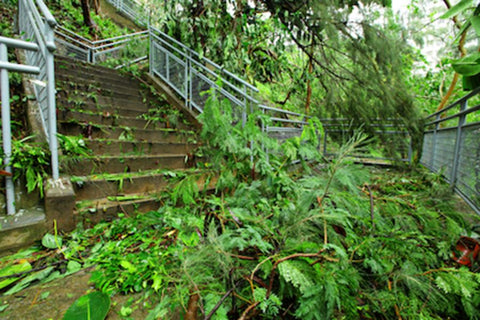Your Cart is Empty
ADDRESS: 18 Kerryl Street, Kunda Park. OPEN Mon-Fri: 6.30am-4.30pm. Sat: 7am-1pm. Sun: 9am-1pm.
ADDRESS: 18 Kerryl Street, Kunda Park. OPEN Mon-Fri: 6.30am-4.30pm. Sat: 7am-1pm. Sun: 9am-1pm.

How did you fare after the whopping storms on the weekend? We are now once again looking down the barrel of extreme weather during the coming summer months, including heat, humidity and aggressive storms which can cause extensive damage to your home and garden.
In the aftermath of a storm like the one we endured over the weekend, yards are often covered with fallen trees, broken branches and scattered debris, leaving a giant mess for homeowners to clean up.
The moisture and heat also create the perfect conditions for weeds to take over.
Post-storm clean-up can present some risks, depending on how much damage your garden sustained, so it's important to take care as you get your yard back to normal.
A thorough cleanup after the storm is also a great opportunity to prevent more damage when the next storm hits.

Crushed White 20mm pebble is a firm favourite amongst professional landscapers and designers and home gardeners alike. It is suitable for so many applications and looks amazing in all types of landscape design.
The chilly winds seem to have chased the rain away and it is the perfect time to get a generous layer of mulch down to lock in the moisture, keeps the weeds at bay and keep your plants warm.


Both garden soils and plants benefit from mulch. While you can mulch at any time of the year, doing so in autumn makes a lot of sense. Here are some tips to make sure your plants thrive after an application of organic mulch!